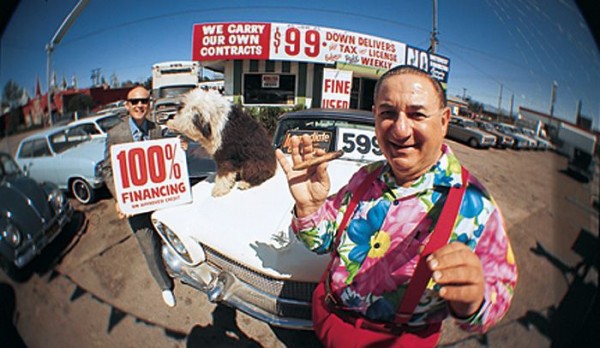Like any game there are rules to selling, especially when it comes to closing a sale. To ensure sales success in your business, whether you're a startup or an established entrepreneur, here are a dozen of my best commandments for sealing the deal.
1. Remain seated. The saying goes, present the product, service or idea on your feet, but always negotiate from your seat. Even if your prospect stands up, remain seated. Going from a seating position to standing up suggests something has changed and allows your prospect to exit and end the negotiations.
2. Always present a proposal in writing. People do not believe what they hear, they believe what they see. Always have a contract available and a writing pad. Anything offered or points of value that are included should be written down to show buyers what they get when they make a decision with you.
3. Communicate clearly. No one will trust a person who cannot communicate clearly and confidently. I practiced using recorders and video for years and then played them back to ensure my communication was coming across the way I intended.
4. Make eye contact. This is a discipline instilled only through practice, and you can perfect it by recording yourself. If you want to be believed, it is vital to make eye contact with your prospect. It suggests interest in them and confidence in yourself, your products, your services, and in what you are proposing.
5. Always carry a pen. I remember once I was closing a deal, and I reached for my pen in my jacket but it was gone. The prospect took this as sign that he shouldn't sign—and didn't. I was devastated, and now I refuse to go anywhere without my sword in hand. All agreements require signatures and that requires ink. Keep a pen available at all times. In fact, always have a back-up pen, too.
6. Use humor. Any humor that can make people feel good, inspired or hopeful is always appropriate during the close. Everyone loves a good story, and people are more likely to make decisions when they are less serious. You will close more deals if you can get your client to lighten up and laugh.
7. Ask one more time. Figuring out another way to circle back and reposition negotiations after being told "no" ultimately will make you a great closer. It is not rude to persist; it is the sign of success and prosperity. Because I continue to ask in another way for a "yes" after being told "no" does not mean I did not listen. It only means I am more sold on my view than I am the other's view.
8. Stay with the buyer. Each time you leave the customer to check on something, it creates doubt and uncertainty in their mind. It can create undue antagonism in the negotiations, lower perceived value, and extend the closing time. But keep in mind, this does not mean there is not an appropriate time to leave a buyer and use an authority for a close, as this can be very powerful as long as it is not overused
9. Always treat prospects like buyers. Regardless of the circumstances: no money, no budget, not the decision maker -- always treat the buyer like he is a buyer. I always survey the prospect for signs that demonstrate they have bought in the past. The watch, the shirt, the suit, the necklace, the car they drove, the house they live in, the credit card they use, and others. All are evidence that this prospect has actually demonstrated the ability and history of closing. I always tell myself, "Every buyer is a buyer. Treat them as a buyer and they will turn into a buyer."
10. Stay confident. I always maintain that we can come to an agreement, no matter what I am told by the buyer or those around me. The saying goes: "Where there is a will, there is a way." This mindset of knowing you will reach an agreement requires you to eliminate all negativity from your environment as though it were a disease that kills, and be assured, it does.
11. Be positive. No matter how the buyer responds, keep it light and maintain a can-do attitude throughout the negotiations. When you go negative due to the buyer being negative there is only one outcome and it's not good. Negativity always succumbs to positivity.
12. Always smile. This is not just about your attitude, but also your physical manifestation. For the next week, practice smiling with everyone in every situation you encounter. Do this until you are able to argue with a smile, disagree with a smile, negotiate, overcome objections and close with a smile. Have you ever noticed that very successful people are smiling all the time? It is not because they are successful that they are smiling, it's how they got successful. This is a million dollar tip: Smile.
Adapted excerpt from The Closer's Survival Guide by Grant Cardone (Cardone Enterprises, 2011).










